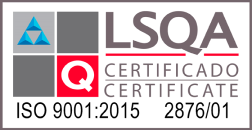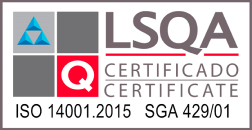Every year before April the 30th, through the website of the RETC´s Single Window, companies must make their emissions reporting generated by point sources that were operational during the previous year, this either by requirement of the Atmospheric Decontamination Plan in which the establishment is circumscribed or by order of Supreme Decree No. 138 of 2005, which establishes that all holders of point sources of atmospheric pollutants that are established in Said decree must deliver to the competent Regional Ministerial Health Secretariat of the place where they are located, the necessary information to estimate the emissions from each of their sources.
In March 2020, the Single Window website was updated and all the existing sources in each establishment had to be registered in the Sources and Processes Register (RFyP), indicating characteristics of the source such as type of source, type and nominal fuel consumption, source classification code (CCF8), among other characteristics that allow each source to be described. Once the sources are registered, the option is activated to be able to make the emissions reporting in the Single Register of Atmospheric Emissions (RUEA), where for each source the monthly fuel consumption, the weekly operating cycle and the level of activity must be indicated from the source, it can be raw materials used or products generated, this depending on the CCF8 with which the source has been registered.
With the fuel consumption and activity levels reported in the RUEA, and according to the description of the source registered in the RFyP, the emissions from each source are automatically calculated, which during the month of October, according to what is established in the Supreme Decrees N ° 1/2013 N144/2020, must be verified by the person in charge of establishment through the annual affidavit, where it is declared under oath that all the information provided is reliable and that there are no omissions in this regard.
The objective of this emissions registry is to raise the emissions inventory from a large part of the country’s stationary sources, which is later used to carry out important atmospheric studies, so it is of great importance that each establishment provides the correct information that allows determining its atmospheric emissions as close to reality as possible.
Often companies hire third parties to make their emissions reporting, receiving only the proof of sending the declaration, without understanding or informing themselves of the information that is being declared. It is of great importance not to settle for just having a certificate of mailing of the return, knowing the information that is being declared and the issuance results that should result, will make the review of the annual affidavit much easier.
In PARTICULAS we make emission reporting, for which in addition to the certificate of sending the reporting, we deliver to our clients a descriptive report of the declaration made, which includes the description of the sources registered in the Source Registry and all the information declared in the Single Registry of Atmospheric Emissions, indicating all the assumptions and considerations that have been carried out, finally showing the emission calculation resulting from the information entered in the emissions reporting, which will be useful for the establishment manager to carry out the review of atmospheric emissions that must be approved by means of the annual affidavit. Finally, an executive presentation is made to our clients so that they know what their establishment is declaring and make sure that this information really represents the operation of their sources (Valeria Campos, 2021).
Become part of your emissions reporting!











